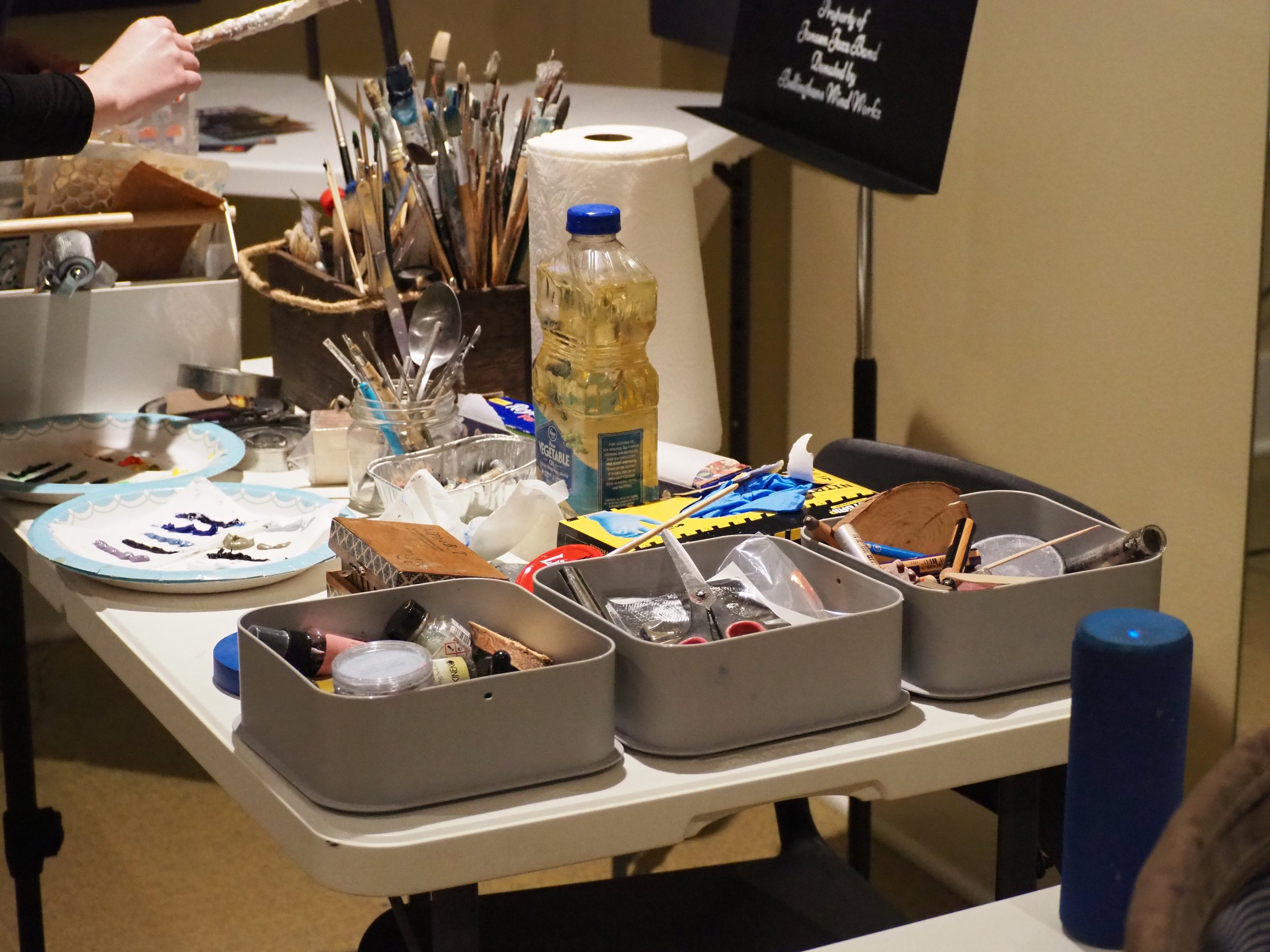
About Encaustic Painting
Encaustic painting is an ancient method of making paint from beeswax, resin, and pigment. Some formulation of this type of paint was used in ancient Roman Egypt, notably on the funerary portraits discovered at Fayium. Brightly colored and water-resistant, wax-based paint was used to paint warlike designs on Greek ships, too. The word “Encaustic” comes from Greek, meaning “to burn in.”
Artists and scientists rediscovered the “Punic wax” recipes for encaustic wax mentioned by Pliny the Elder in the early 1900’s and began experimenting with beeswax-based paints again. Jasper Johns’ “Flag” (1954) was done in encaustic paint.
As research and materials became more stable and standardized, Encaustic painting as modern medium really took off in the 1990’s, and today, thousands of artists all over the world work in Encaustic painting, incorporating a vast variety of materials, techniques, and media.
Painting with hot wax is fun, tactile, and dimensional. As encaustic paint cools quickly rather than drying, it can be manipulated with heat tools and fused and re-fused. Paper, photographs, and ephemera like newspaper clippings and dried plants can be incorporated, and the line between painting and sculpture can be blurred by building up textures and dipping paper, dried clay, and fabric materials into hot wax.
Contact me to learn more about upcoming encaustic workshops, and sign up for my newsletter to stay in the loop!
Standard practice today involves melting Damar Resin (a crystallized evergreen tree sap sourced from India and Southeast Asia) and adding in purified or filtered beeswax to make Encaustic medium. The basic medium can then be painted on a wooden or paper substrate in layers, and pigments may be added to the paint to create a range of colors. Once the paint cools, it must be fused a second time in order to adhere properly to the substrate, usually with heat tools like an electric heat gun, iron, or open flame from a propane or butane torch.



